One of the enduring characteristics of French life, both in perceptions from outside and self-perceptions within, is a special, state-level relationship with culture, embodied by its culture ministry, which was born under Charles de Gaulle in 1959 and led for its first decade by the enigmatic and visionary André Malraux. Today, France is a country with generous support structures for out-of-work artists, or intermittents du spectacle. It has a long history of state investment in the arts, is home to some of the most-visited museums in the world, and possesses some beautifully maintained heritage monuments. For decades it has had robust legal protections in place to safeguard independent bookshops and publishers against the discounting wars of large supermarket chains and, more recently, Amazon. It has an annual investment scheme for home-grown independent films. But lately the proud image projected by the ministry located in rue de Valois, two steps from the Palais Royal and Comédie Française, has come under intense scrutiny and its spirit, ambitions, and role have been called into question.
‘I have no problem admitting that for two years I have had absolutely no time to read. I read lots of notes, lots of legal texts, the news, AFP wire stories. But I read very little.’ This candid statement from Fleur Pellerin was the last in a run of faux pas during her time as culture minister, from 2014 until February this year, in François Hollande’s government. Pellerin was trying to explain away her earlier inability to cite a single work by French writer Patrick Modiano after he was awarded the Nobel Prize for Literature. For many, such a lapse had uncomfortable echoes of Nicolas Sarkozy, who had declared when he was president that he had not enjoyed La Princesse de Clèves, the 17th-century novel by Madame de Lafayette that is a favourite of many intellectuals in France, most vocally Alain Finkielkraut, and a staple on school reading lists. The Enlightenment demand that politicians master the classics and embrace the arts is still powerful in France and the comment turned Sarkozy, by his own admission, into ‘a symbol of “no culture”’. He has sought to redeem himself ever since and, in La France pour tous, his latest book written with an eye on the 2017 presidential elections, Sarkozy has rebranded himself as a veritable culture vulture.
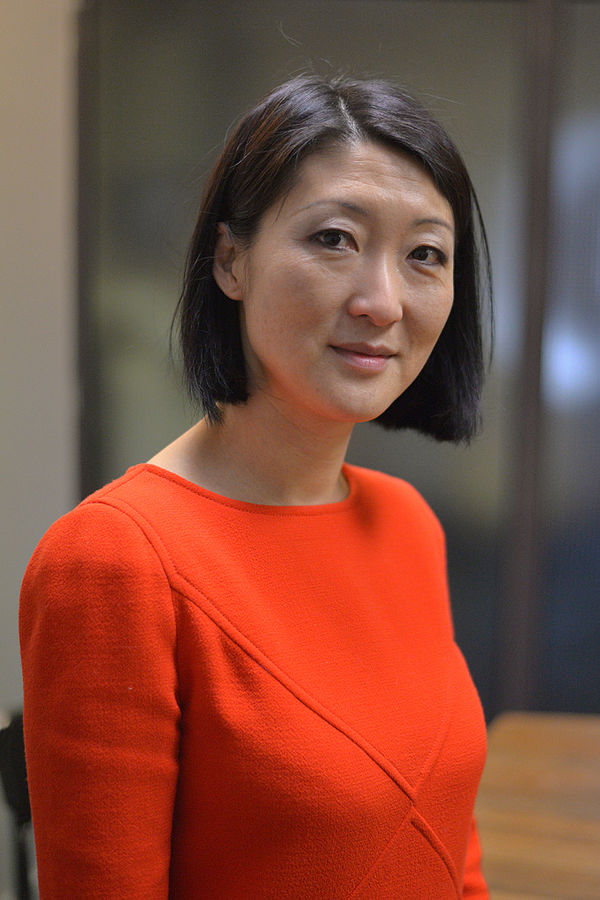
Fleur Pellerin. Photo: Wikimedia Commons (Selbymay)
In criticising La Princesse de Clèves, Sarkozy was questioning something more profound: the inclusion of such a text on school reading lists, with the aim to democratise high art by having children around the country read and discuss it. This, in essence, is the spirit of culture pour chacun (culture for everyone), which was a term in official use by the culture ministry in the 2000s but was, in rather different form, an underpinning philosophy of Malraux’s culture ministry. ‘The ministry in charge of cultural affairs,’ said its founding decree in 1959, ‘has the role of making available vital works from humanity, and initially from France, to the greatest possible number of French people, of ensuring the largest audience for our cultural heritage, and of supporting the creation of the spirit and works of art which enrich it.’
Since Malraux, culture pour chacun has been interpreted differently by various ministers during the democratising push of the 1970s and the ’80s, most notably by the charismatic and energetic showman Jack Lang, who served twice as culture minister during the presidency of François Mitterrand. Subsequent ministers, such as Frédéric Mitterrand (nephew of François) during Sarkozy’s term, have been under greater pressure to generate revenue at the same time as sharing culture.
Looking at the French culture ministry from the perspective of culture pour chacun reveals how the debate over the democratisation of the arts has evolved: an initially top-down approach now encompasses questions about inclusiveness and diversity. The deeper question here is whether this change has affected the creation of art, and our understanding of it in all its forms. This includes questions about the role and value of the popular arts in France – cartoons or bandes dessinées; the film industry’s regular production of crowd-pleasing comedies, and the chanson française as embodied by Georges Brassens or Boris Vian, and by its contemporary incarnations Jean-Jacques Goldman or Marc Lavoine.
Jacques Duhamel, for instance, culture minister (1971–73) in Jacques Chaban-Delmas’s government, was animated by this premier’s New Society ambitions to promote the integration of minorities. Duhamel tried to modernise cultural policy with an increased departmental budget and by drawing on local government. Rather than disseminate the pearls of France’s historic artists and writers to all, the focus instead was to bring out from the margins other kinds of culture, and absorb these new influences into the centre.
In 1977 the role of Mayor of Paris was re-established after a near century-long hiatus since the Third Republic. Breezing through the door was a youthful, chain-smoking Jacques Chirac. The change hinted at greater decentralisation and regional autonomy, but in concrete terms the culture ministry did not delegate many of its powers to the mayor. The biggest boost to decentralisation has come more recently, in the 2000s, with the passing of legislation that allows the ministry to share the financing of institutions with regions or departments. This has produced new hybrid institutions outside Paris, such as the Pompidou-Metz (2010), and Louvre-Lens (2013).
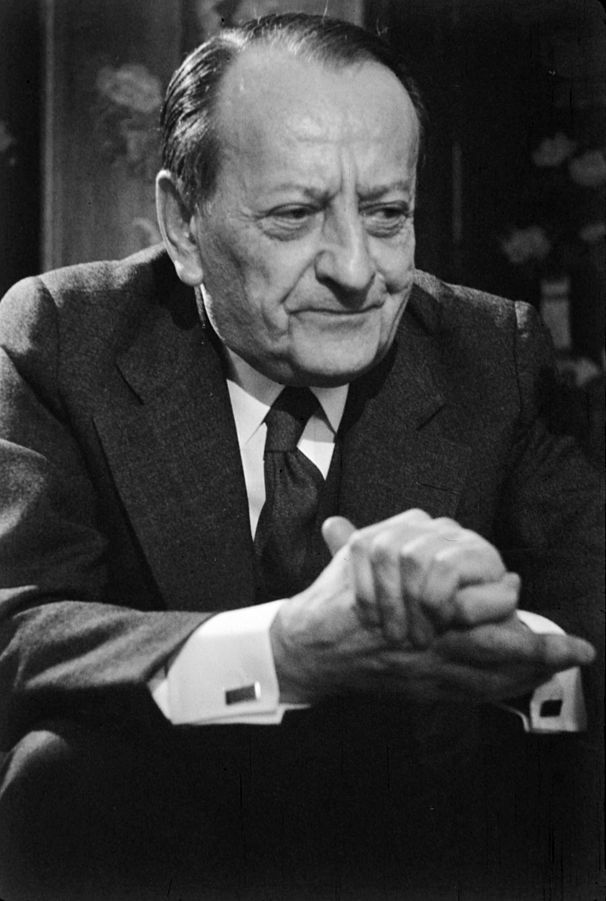
André Malraux in 1974. Photo: Wikimedia Commons
André Malraux was an art historian before he was a minister, and had little love for bureaucracy and administration. The relationship of art to society had been on his mind long before he entered the government. In a speech in 1945 to the Constituent Assembly he urged democratisation: ‘It seems to me indispensable that French culture stops being the privilege of people who are lucky enough to live in Paris or are rich.’ But democratisation in Malraux’s terms was about improved distribution of the goods, not a commentary or judgement on the goods themselves. Culture, in his mind, represented the highest and most lasting forms of artistic achievement; art was an outcome of humanity’s unending struggle against the human condition.
Malraux was passionate about art, and at times wildly egotistical. After his series of novels in the 1930s, including La Condition humaine, he published major tomes such as Psychologie de L’Art (1947–49) and Le Musée imaginaire de la sculpture mondiale (1952–54), both of which have influenced Jean-Luc Godard in his lifelong investigation of a visual, poetic approach to cinema. By Malraux’s own admission there were always two people when he worked for the government: one an original thinker and figurehead; the other very loosely in charge of the day-to-day running of an administration. He never embraced the latter role and his most popular and enduring legacy as minister has been his conservationist policies – homages to the past: the wholesale cleaning and restoration of historical monuments such as the Louvre and Versailles, and the ‘Loi Malraux’ in 1962, which safeguarded whole districts of historical and architectural significance from modern development or change.
Nevertheless, Malraux instituted the still-active avance sur recettes scheme, a system of selective aid to new French films, often by untried directors, which is still in place today. He also revived a neglected tradition of state commissions, which led to some bold new partnerships at times, including Marc Chagall being invited to paint the ceiling of the Paris Opéra, and promising commissions offered to Le Corbusier, Jean Cocteau, and Georges Braque (though all died before these could be completed).
Ultimately, there was a mystical quality to Malraux’s leadership – he spoke in lofty, inspirational terms about culture. When he was fired in 1969 – after firing the revered Henri Langlois at the Cinémathèque the previous year – the ministry was still the skeleton department it had been set up as in 1959. He presided over a modest 377 staff at rue de Valois and on average culture received 0.39 per cent as a share of the state’s budget throughout the 1960s. As the historian David Looseley has put it, ‘that the Ministry managed to survive to become as important as it is today was therefore the result not of ministerial drive or of a winning and timely formula being devised at the outset, but of an unpromising empty vessel being subsequently filled’. In the years after Malraux the budget has crept up, increasing from 2.6 billion francs in 1981 to 13.8 billion in 1993. Today, it is €7.3 billion.
In its early days, the ministry did not dedicate much of its resources and attention to museums. Under subsequent ministers, however, national museums underwent intense development. New buildings were built, financing increased, and every president since Georges Pompidou in the 1970s has sought to develop his own museum project as a way of leaving a cultural legacy. In this sense, museums in France represent broader issues such as inclusiveness and how France deals with its minorities, past and present. An open, popular, vibrant museum culture is now considered emblematic of a broader social atmosphere.
There are some 37 national museums across the country, the most famous in the Paris region such as Versailles, Orsay, and the Pompidou. These are all under the tutelage of the culture ministry, though some may eventually be looked after by a different ministry. They hold national collections and are mostly dedicated to the beaux-arts and have been progressively detached from centralised management. In the 1990s the Louvre and Versailles were granted the status of ‘autonomous state establishment’, which gave them responsibility for their own budgets and profits. This encouraged the seeking of private funding and expansion activities that would generate income, known as a politique de l’offre – incorporating shops and cafés into the museum space and holding events. Private input into French public institutions has always been rather modest, but in the 2000s a series of laws were passed that increased tax incentives for companies to become patrons of national museums.

Jack Lang. Photo by Osmar Arouck, Belém do Pará, Brazil, January 2005 (Wikimedia Commons)
Jack Lang’s appointment in 1981 is, with hindsight, the most decisive in shaping the form the culture ministry has taken today. Lang’s years in charge were memorable, colourful, and divisive. He combined flair in front of the cameras, a love of the media spotlight, political savvy, and an apparently genuine dedication to raising the status of culture and defending both its independent and commercial sectors. The annual Fête de la Musique, which he introduced in 1982 and has since gone worldwide, is typical of Lang’s policies: exuberant, high-profile, and crowd-pleasing, but also providing a real boost to creativity and its free expression. He also left behind a highly visible legacy, having presided over François Mitterrand’s Grands Travaux (great works) – all in Paris – of the Bibliothèque nationale, the new Louvre pyramid, the Institut du Monde Arabe, Opéra Bastille, the Grande Arche at La Défense and, at La Villette, the City of Science and Music.
Lang’s impact on culture in France at the level of state policy persists today, most notably in his first bill when he abolished the 1979 ‘arrêté Monory’, which freed books pricing from their fixed cover price and replaced it with the prix unique du livre, requiring all booksellers and other sales outlets to respect a mandatory single pricing system. This has since provided robust protection to independent publishers and bookshops and ensured France retains a comparatively healthy book culture, both for authors and readers.
On the flipside, another long-lasting change introduced in the Lang era was the 1985 decree, pushed through by Mitterrand on the eve of a possible government cohabitation with the centre-right republican party. The ruling significantly extended the powers of nomination held by the French president, notably in the cultural sphere. The head of state, on the advice of the culture ministry, is now able to decide on a wide-ranging number of key cultural posts, including the administrator of the Comédie Française, the presidents of the administrative councils at the Opéra Paris and Bastille, the presidents of the Centre Pompidou, the Centre national du Cinéma, the Institut de l’audiovisuel, and many more. Consequently, culture in France expresses, in the words of the French historian Antoine de Baecque, ‘the majesty of power and the glory of the sovereign’.
The government’s enormous powers of appointment in the cultural sphere have provoked a number of controversies but no modification to the procedure. ‘This monarchical tradition is insupportable, even if those brought in are great artists and top professionals,’ said Greg Germain, the director of the fringe Off section at the important annual Avignon festival, after the controversial replacement of Olivier Py by Luc Bondy at the Théâtre de l’Odéon in 2012. For Valérie de Saint-Do, historian of the ties between politics and the arts, and a journalist at Cassandre/Horschamp, ‘the issue of nominations has been the most ridiculous and scandalous aspect of the last government, but it’s the tree that hides the forest […] the system reduces cultural politics to a game of individual career-building.’
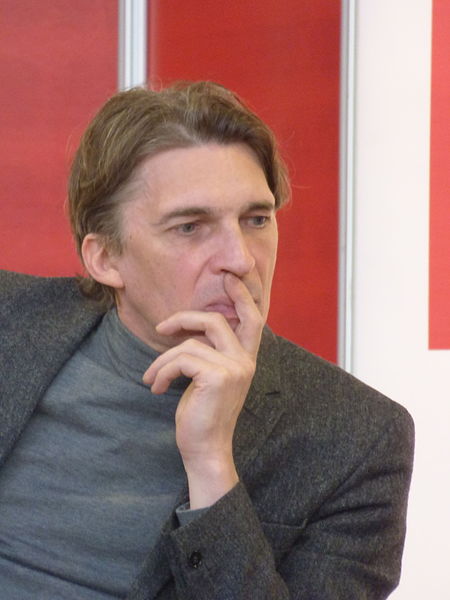
Nicolas Bourriaud in 2016. Photo: Wikimedia Commons
One of the most high-profile dismissals by the culture ministry operating in this monarchical mode took place two years ago at the prestigious École nationale supérieure des Beaux-Arts. The curator, art critic, and formalist theoretician Nicolas Bourriaud took over as director in 2009 and led the school through an energetic period of development which involved strengthening its international ties with global art institutions and boosting the number of foreign students. These changes are all said to have been factors in the decision to fire him in July 2015. His replacement was so swift that even months later, Bourriaud said that he still struggled to believe it was for real. The more substantial criticisms focused on how quick and opaque the whole process had been: candidates were given from 2–21 July to apply, allowing barely enough time to put together a serious application for such a position.
There were many who supported Bourriaud and were especially critical of the undemocratic way he had been pushed out. But others have remained reticent over his legacy at the ENSBA. During his time there he opened its doors to outside sponsors and, for his detractors, set the school on the track of commercialisation. Bourriaud’s defence is pragmatic: ‘One cannot reproach me [for commercialisation] while at the same time taking away €800,000 of my budget compared to 2012,’ he explained to Médiapart. ‘I cannot make cuts in education or reduce the activities of the school, because our pedagogical model includes heritage, collections, and exhibitions. Therefore, I had to find money from outside, and I was able to bring to the centre of the school the role of the sponsors.’ Bourriaud’s dilemma is one all art schools and institutions face: are businesses really a benign influence when they become investors in culture? Do corporate sponsors necessarily change the nature of an institution? By firing a director like Bourriaud who was willing to take the pragmatic approach, the culture ministry seemed to be admitting that it has no clear response to the challenges that institutions face.
A few scenes from the Pellerin era capture what is a particularly low period for the ministry. The disturbing aspect of the latest upheavals is not that Pellerin is an embarrassment to France’s sturdy defence of culture and its proud contemporary output. To frame the situation this way is to indulge the myth that Pellerin, like Sarkozy, is an aberration in regards to France’s special relationship with culture, represented by its culture ministry. We should remember that Hollande replaced Pellerin with Audrey Azoulay – one of her classmates from the civil-servant school ENA – not for her indifference to culture, but because he realised she was ‘damaged goods’ in the cultural milieu and that her public missteps could harm his own 2017 re-election bid. The previous culture minister in Hollande’s government, Aurélie Filippetti, had cut the budget by a startling 30.2 per cent and when Hollande began his presidency in 2012, he had made his position clear, declaring: ‘culture is no longer a state priority’.
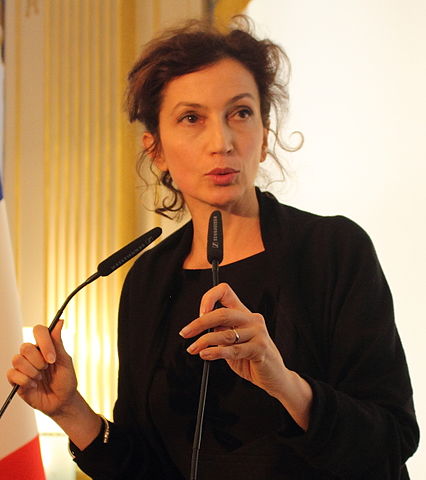
Audrey Azoulay in 2016. Photo: Wikimedia Commons
When Pellerin was appointed, the France 3 documentary Un temps de président showed Hollande breezily advising his young minister in front of the cameras to take inspiration from the talisman of the 1980s. ‘Lang’s strength was his ideas! He had ideas. You need ideas. See Jack! That’s the first meeting you should have, with Jack! […] Go to shows every night. You’ve got to do the theatre.’ When Pellerin lost her job, she came to realise that perhaps her primary failure had been to fail to take those words seriously. ‘I thought it was a joke but in fact it was my road map.’ Her indifference to playing the game of appearing cultivated was her undoing, and makes her oddly admirable.
In her ministerial office in front of the Canal Plus cameras, Pellerin was open about how alien these surroundings were to her – she could not turn on the television, there were piles of unopened letters, she picked up objects she had never seen before. Who was the artist of the huge tableau on the wall? ‘No idea,’ she replied. This kind of scene sums up the French culture ministry today. The budget and subsidies are still comparatively higher than those allocated in other countries, many of which lump ‘culture’ in with other sectors, such as the odd combination of ‘culture, media and sport’ in Britain. But aside from the positive policies put in place by previous, more ambitious and visionary ministers, the role now is more easily reduced to that of providing a high-profile recipient for invitations to openings of new exhibitions or plays.
‘It’s all a décor,’ Pellerin said in another moment of candour, about the trappings of her ministerial office. ‘It’s for you the journalists.’ Grimly, we can agree with her on that. The most important quality for the minister walking into the offices on rue de Valois today is the ability to pretend that he or she cares about culture. The role of the ministry is now a function – distributing subsidies, organising parties, being seen to go to the theatre – rather than a job. But to do more than that, even to have some ideas, is not a priority, nor even desirable, if those ideas cost money. For now, the special relationship with culture on which France prides itself is maintained and renewed only by its artists. The state’s belief in its intangible and intrinsic value is in sharp retreat.
From the July/August issue of Apollo: preview and subscribe here.
Unlimited access from just $16 every 3 months
Subscribe to get unlimited and exclusive access to the top art stories, interviews and exhibition reviews.


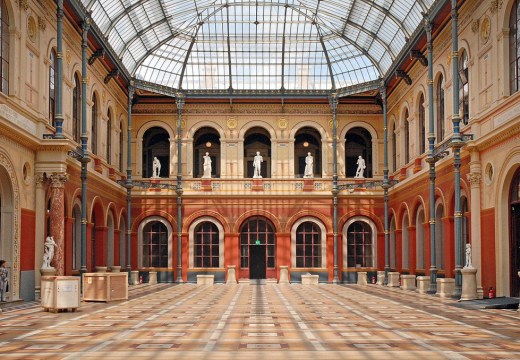










![Masterpiece [Re]discovery 2022. Photo: Ben Fisher Photography, courtesy of Masterpiece London](http://www.apollo-magazine.com/wp-content/uploads/2022/07/MPL2022_4263.jpg)
It’s time for the government of London to return to its rightful home